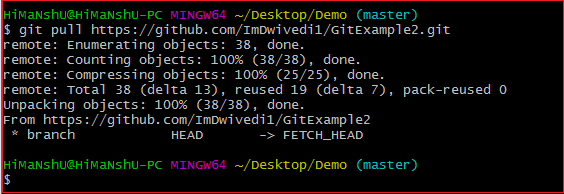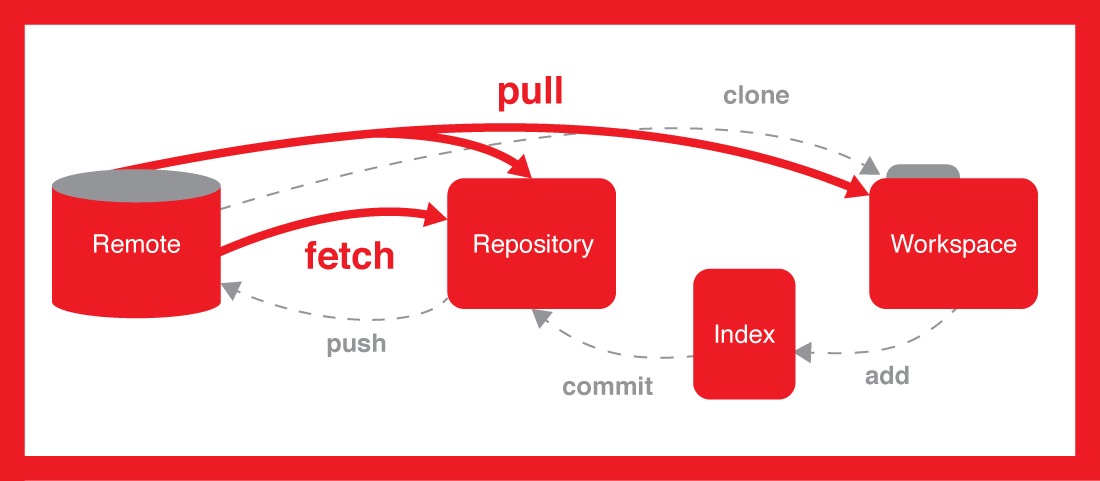

Git pull origin master in a branch code#
It is likely that the longer you take to implement your changes, the more changes could be made to the original “upstream” code - which could be problematic, especially if the code you are changing on your branch also gets changed in the upstream repository, which can leave you with a bunch of troublesome “merge conflicts” to deal with later on. As you work you will add and commit changes you make. Now that you have an independent workspace (a branch) to work on, that will not break any of the existing code, you can get to work implementing your changes. You can verify that you created the branch by using the following command which will show you all your local and remote branches: $ git branch -a To create a branch called “new_feature”, use the following: $ git checkout -b new_feature You can actually have multiple branches (for different features) that you’re working on at the same time. This branch will be independent of the clean, functioning “master” code and is a safe place for you to delete, modify and add code. To do this, we are going to want to create a branch to work on. Now we can start making our desired changes. Okay, so now we’ve made a fork of the repository we want to work on, we’ve cloned it to our local computer and also added a remote pointing back to the original repository. You can verify that you now have two remotes, “origin” and “upstream” using the following: $ git remote -v We usually call this remote “upstream” and can add it using: $ git remote add upstream So we want to add another remote pointing to the original repository so that we can periodically git pull any changes that have occurred in that repository such that we are working on the must up-to-date version of the code. While we are making changes, others might also be making changes and the original repository might be getting updated during the time you are adding a feature. However, the goal here is to contribute to the original repository and we want to keep up to date with the original. This means that when you do git add/ git commit/ git push you can push your local changes to the forked repository. When you cloned the forked repository onto your local computer, git automatically added a remote repository named “origin” pointing to the forked repository on GitHub.

Then, at the command line, clone the repository, for example: $ git clone Navigate to your forked repository on GitHub, click the “Clone or download” button and copy the url. This is as simple as using git clone on the forked repository. Clone the repository locallyīefore you can make changes to the repository you’ll first want to make a local copy on your computer. To fork a repository, find it on GitHub and then click the Fork button. A “fork” is just an independent copy of a repository that you can develop on without affecting the original. The first step is to fork the GitHub repository you want to work on. Delete your feature branch using the GitHub website or, delete the local branch: git branch -d new_feature, and delete the remote: git push origin -delete new_feature.Change to master: git checkout master and pull: git pull upstream master. Once the pull request is accepted, you’ll want to pull those changes into your origin (forked repository).Open a pull request on GitHub merging your changes with the upstream (original) repository.Push changes to your remote repository: git push origin new_feature. Sync dev branch: git checkout new_feature, git merge master. Pull new changes from remote: git checkout master, git pull upstream master.Make desired changes to the local repository on this branch.Checkout a new branch (here called “new_feature”): git checkout -b new_feature.Add remote called “upstream” pointing to the original repository: git remote add upstream.Clone the repository locally: git clone.Fork a GitHub repository: navigate to a repository on GitHub and click the Fork button.The workflow comprises the following steps which are described in more detail in the subsequent sections: I wanted to document my simple approach to this workflow here (for reference by my future self and others). For this, we typically use the “fork-and-branch” workflow. I particularly feel this way when wanting to contribute to others' open-source projects on GitHub. However, if your anything like me, using these tools sometimes feels like a bit of a black box, nicely summarised by this xkcd comic: I primarily use Git and GitHub for my open-source work.


 0 kommentar(er)
0 kommentar(er)
